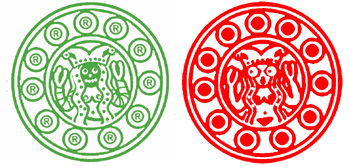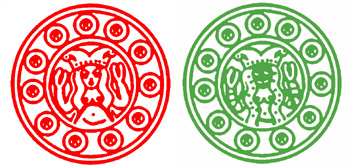Las Americas
They Don't Call It StarBUCKS for Nada
The exploits of the Colombian cartels, the Tijuana Boys, and other notorious Latin narco lords are the stuff of legend, but, in terms of sheer numbers, the world’s most successful drug dealer may be none other than the infamous Starbucks gourmet coffee empire, selling over-the-counter caffeine to a billion addicts each year ($2.5 billion in net earnings in 2001). At last count, the predatory Seattle-based chain had 4,247 outlets in North America, 4,246 of them in the U.S. and Canada, and one flagship store in Mexico.
Appropriately enough, Starbucks–Mexico’s brand-new java dispensary is situated in the posh Sheraton Hotel on bustling Reforma boulevard, just a few steps from the U.S. embassy. Although 20 percent of Starbucks business is now done outside of the United States, with nearly 3,000 stores churning out the lattes in Japan and Europe, the Mexico City venture is the first in Latin America and will be followed by 20 clones around the country in the next two years. Alcea, a Mexican franchising enterprise which also handles Domino’s Pizza, is talking about 200 Starbucks all the way to Tierra del Fuego by 2010.

The new Starbucks on Reforma features soft lighting and an aromatic ambiance. The tap-tap of laptops reminds this reporter that he is in Starbucks’ trademark “third space” (“between home and office”). The Starbucks Experience offers a select array of cafe beverages brewed from the coffees of 20 distinct countries. Behind the counter, well-groomed employees whip out the signature Frappuchinos and lattes.
Indeed, the only jarring note is the 36 pesos ($3.60) the young woman at the register wants for a double latte, ten times the price Indian farmers are getting for a pound of their product in Chiapas, Oaxaca, and other coffee-rich regions south of the border.
Not serendipitously, the arrival of Starbucks in Mexico coincides with the most lacerating crisis in the history of coffee production in Mexico and Central America. Last March, world prices bottomed to 41 cents on the New York commodity market, tying a record low set way back in 1882; the impact upon poor farmers has been devastating.
There is no starker contrast in the economics of coffee these days than between the cushy comforts and gourmet blends of the Starbucks Experience and the grim, daily existence of 360,000 mostly Indian coffee farmers who work small plots carved from the jungle mountains of southern Mexico. Sometimes walking six hours from patch to village with a hundred pounds on their back, Indian farmers produce 5,000,000 sacks (134 pounds each) in a good year, Mexico’s most lucrative agricultural export, bringing in $700 million annually–but down this year by 20 percent as prices plummet due to world glut.
For recompense, coffee farmers and their families suffer endemic malnutrition; they have the lowest income levels and the worst health and educational statistics in Mexico. The trail of coffee production in southern Mexico literally is etched in blood as extreme poverty leads to social upheaval and social upheaval to human rights violations and government repression. The cycle is reiterated each decade from Atoyac on the Costa Grande of Guerrero, to the Loxichas in the southern sierra of Oaxaca, to the highlands and jungle of Chiapas, all Indian coffee-producing regions, and all settings for armed insurrection in recent years. In December 1997, 45 Mayan Indian supporters of the rebel Zapatista Army of National Liberation (EZLN) were massacred in Chiapas in a dispute over the coffee harvest.

The Zongolica, an upland Nahua Indian coffee-growing region on the Veracruz-Puebla state border, is the poorest demographic area in the nation, reports the National Institute of Geography and Statistics (the Zongolica also records the highest alcoholism rates), putting the lie to the myth that coffee production is good development. Foisted upon third world economies by World Bank credits for export agriculture, farmers have little control over coffee prices, which are 100 percent dependent upon and vulnerable to world market manipulation. Moreover, coffee production forces poor farmers to turn over valuable food-growing land to a non-food export crop that serves no nutritional function in their diets. Despite the World Bank-fed glut, more and more jungle land is being uprooted for coffee production, threatening fragile bio-diversity.
In 2001, world coffee producers, traditionally led by Brazil (with Vietnam, a recipient of much World Bank largesse, a surprising number two), put out a global total of 114 million tons, but only 108 million were consumed–this year, production will top out at 124 million tons, further depressing prices. An effort initiated by Mexico, the world’s fifth-largest producer (but first in organic coffee exports) to buoy prices by burning 5 percent of the world crop, was sabotaged by a cartel of five transnational commercializers led by Nestle, according to Fernando Celis, advisor to the National Confederation of Small Coffee Growers.
One palpable result of the coffee collapse has been widespread abandonment of their patches by small plot farmers in the Indian south. Unable to feed their families, many have joined the migration stream to El Norte for the first time with the inevitable tragedies that desperate newcomers often encounter in the dangerous border geography–14 coffee workers from Coatepec, a prime growing area in Veracruz, stewed to death in their own juices out in the Arizona desert near Yuma in June 2001, and this year it is former coffee workers from Chiapas whose dissected corpses are coming home in closed caskets.
Starbucks is quick to insist that its hands are clean. Social responsibility director Sue Mecklenberg argues that what little Mexican coffee Starbucks buys is purchased at a premium price from six co-ops in the El Triunfo cloud forest reserve of Chiapas’ Sierra Maestra, the last refuge of the fabled Quetzal, a bird that the chain uses as a logo for its “Shade-grown Mexico” blend. The Triunfo project is a collaborative effort with Conservation Inter-national, the powerful, privately-financed protectionist organization funded by such notorious corporate slackers as Enron.
While Conservation International and Starbucks bring niche marketing to the 700 farmers of El Triunfo, CI seeks to evict Mayan farmers from another Chiapas rainforest, the Lacandon jungle, for alleged illegal occupation of the Montes Azules biosphere.
Starbucks, Mecklenberg points out, is shelling out $1.20 a pound to the campesinos of El Triunfo, three times the price on the Chiapas commercial market, and will buy a projected 1.5 million pounds this year from them.
A perennial target of the anti-globalization movement, Starbucks is a major player in the world market, buying about one percent of global production. Two years ago, TransFair USA, an advocacy group for fairly-traded organic coffee growers and importers, inked a much-heralded agreement with Star-bucks whereby the chain buys a million pounds of organic coffee a year at fair trade prices, about one percent of the chain’s total purchases. Because organic coffee is certified to meet high standards, Indian farmers who have been approved to grow it receive an average $1.40 a pound (some importers pay up to $1.60), at least 20 cents more than Starbucks farmers get for their “Shade-grown Mexico.” Coffee from El Triunfo is not certified organic (although Starbucks has announced creation of its own certification system.)
Given the volatility of coffee politics these days, it was not surprising that, along with the new Starbucks Mexico, came the folks whom former President Ernesto Zedillo liked to call “the globalphobes.” Activists from Global Ex-change, the very active San Francisco human rights and fair trade advocacy group, stand on Reforma boulevard passing out leaflets to Starbucks customers suggesting that they request their lattes be made with fair trade coffee (the Mexico City outlet does not use fair trade coffee).
Although Starbucks likes to paint itself as being socially responsible, Global’s Craig Adair thinks it can do better. The mega-corporation has yet to demand to Global’s demand that it buy half the coffee it sells in Mexico from Indian farmers at fair trade prices.
Selling the Starbucks Experience to Mexico is not going to be easy. Mexicans drink precious little coffee–about 700 grams a year compared to a northern European per capita consumption of nine kilos. In great coffee-growing country like Chiapas’s Soconusco, one is apt to be served Nescafé rather than the real thing, all of which is exported.
For those who will settle for nothing less than a gourmet cup, the café con leche at the La Blanca, a Mexico City institution, costs just 13 pesos, nearly a third of the Starbucks price. Even cheaper café de la olla, steaming and laced with sugar and cinnamon, is served from great clay pots on street corners for only a few cents americano. But according to nutritional demographics, most Mexicans get their morning caffeine fix not off a cup of joe but rather from another transnational drug dealer, the Coca Cola Corporation.
John Ross sends frequent dispatches from the Coffee Lands.


